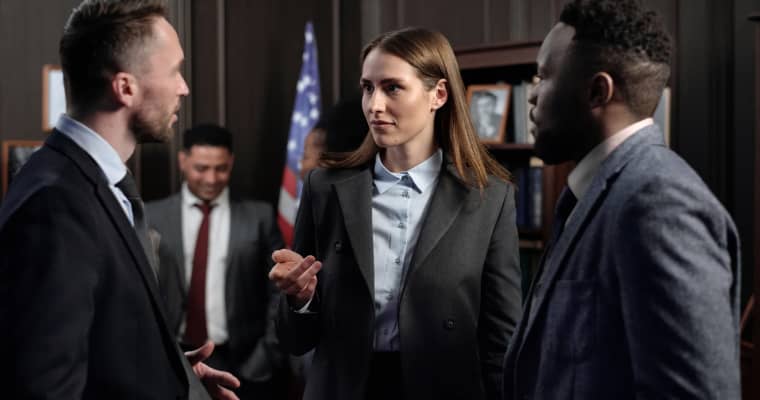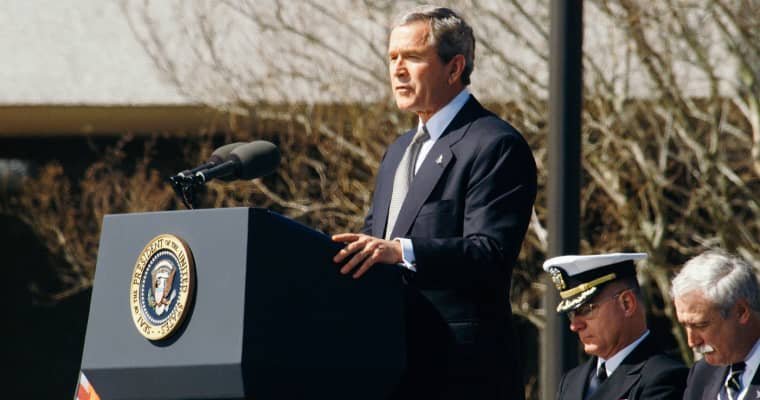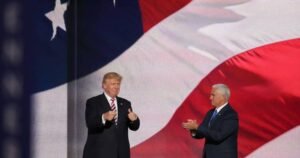Recently, the White House made headlines by removing the official portraits of former President George W. Bush and his spouse, former First Lady Laura Bush. This decision has sparked discussions and debates throughout political circles and among the public. Let’s delve into the main points of what happened, why it might need occurred, and the broader implications of this action.
A Symbol of Presidential Legacy
Presidential portraits within the White House function a symbol of the enduring legacy of previous presidents. These portraits are historically displayed prominently, reflecting the history and continuity of the United States leadership. George W. Bush, the forty third President of the United States, served from 2001 to 2009, and his tenure included important occasions such because the September 11 attacks and the subsequent War on Terror.

What Happened?
In a shocking transfer, the official portraits of George W. Bush and Laura Bush have been relocated from their conventional place of honor within the Grand Foyer and Cross Hall of the White House. These portraits have been moved to the Old Family Dining Room, a smaller and fewer frequented area inside the White House.
Reasons Behind the Move
The White House has not supplied an official rationalization for the removing of the Bush portraits. However, a number of theories and speculations have emerged:
- Political Motives: Some analysts recommend that the choice is likely to be politically motivated. Given the contentious relationship between the Bush household and the Trump administration, it’s potential that the transfer displays lingering political tensions.
- Redecoration and Renovation: Another principle is that the transfer is a part of a broader redecoration or renovation effort inside the White House. Portraits and artworks are sometimes relocated throughout such processes.
- Historical Reorganization: There can also be a chance that the transfer is a part of a historic reorganization, aiming to spotlight completely different eras or features of presidential historical past in new methods.
Public and Political Reactions
The relocation of the Bush portraits has elicited a spread of reactions:
- Criticism: Many critics argue that the removing of the portraits is an indication of disrespect to the Bush legacy and to the workplace of the presidency itself. They view it as an pointless and politically charged act.
- Support: Supporters of the transfer argue that the present administration has the fitting to arrange and adorn the White House as they see match. They emphasize that the portraits are nonetheless inside the White House, simply in a special location.
- Neutral Observers: Some observers take a extra impartial stance, suggesting that the transfer is likely to be a part of routine modifications inside the White House and never essentially politically motivated.
Historical Context
Presidential portraits have been part of White House custom for hundreds of years. Each administration usually hosts an unveiling ceremony for the portraits of their fast predecessors. These occasions are supposed to symbolize unity and respect for the workplace, transcending political variations.
Broader Implications
The removing of the Bush portraits, whereas seemingly a small act, raises questions concerning the remedy of presidential legacies and the politicization of historic symbols. It additionally displays the deep political divisions that at present exist within the United States.
The choice to take away the portraits of George W. Bush and Laura Bush from their conventional place of honor within the White House has sparked widespread dialogue and debate. While the precise causes behind the transfer stay unclear, it highlights the advanced interaction between politics, historical past, and custom within the United States. As the story unfolds, will probably be essential to think about each the symbolic and sensible features of this choice and its impression on the legacy of previous presidents and the workplace they as soon as held.




